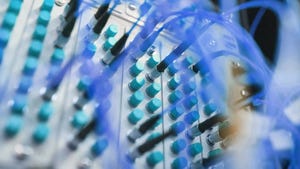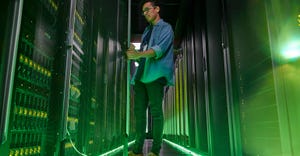
Insight and analysis on the data center space from industry thought leaders.
The Increasing Viability of Sustainable Fire Protection in Data Centers
Protecting data centers from fire is critical. High-pressure water mist systems offer sustainable and efficient solutions for this vital task.
November 2, 2023

In an increasingly digital society, the importance of secure data centers is growing by the day. A fire can cause devastating disruptions and outages, as the incident at hosting provider OVH in Strasbourg, France, a year ago has shown.
Holistic fire protection concepts are suitable for avoiding such disasters. Fire tests show that modern systems are not only reliable and economical, but also have a positive impact from an environmental and sustainability point of view.
Data Center Sustainability: Not Just an Energy Balance Issue
When developing modern data centers, which are growing rapidly in number and size, sustainability is becoming increasingly important. As part of a comprehensive sustainability assessment, in addition to the pure energy balance, other aspects must also be considered.
Direct factors, such as the materials and media used, have clear sustainability implications for data centers. As such, a carefully selected fire protection system can also make a valuable contribution to a facility’s sustainability profile.
Data Center Fire Risks and Their Consequences
In addition to the server rooms, data centers have numerous other technical areas that contain the infrastructure for operating IT. Since this power-hungry hardware generates an enormous amount of heat, it also poses a larger fire hazard. Moreover, uninterruptible power supply (UPS) and energy storage systems are now increasingly operated with lithium-ion batteries, which must meet high fire protection requirements.
The major fire that destroyed an OVH-cloud data center in Strasbourg, France, in the spring of 2021 shows the dramatic consequences of fire-related incidents. More than 65,000 customers were unable to access their data for days, and the cost of this incident is estimated at a value of more than €100 million ($106 million).
To ensure optimum fire protection of data centers, holistic solutions are required that take into account various fire requirements in a safe, ecological, and sustainable manner. Fire tests have demonstrated that effective sustainable fire protection is possible through the choice of extinguishing medium and the applied technology.
Holistic Solutions to Fighting Fire
In plant fire protection, we must deal with many technical areas, which, in themselves, have different risk potentials. This also applies to data centers. A closer look reveals that fire protection should not be limited to the server area. The following graphic illustrates how comprehensively ‘fire protection’ must be thought of in areas with increased fire risks such as data centers:

Data centers feature many technical areas that pose a high fire safety risk
In addition to areas with cable fire loads, liquid fires, and various medium fire hazard risks, lithium-ion batteries are of considerable importance due to their rapidly increasing use. To provide controlled protection against a (possible) fire event in data centers, early fire detection and firefighting systems must go hand in hand and be precisely coordinated.
High-Pressure Water Mist: A Sustainable Alternative
While conventional fire suppression systems consist of a mixture of different systems, high-pressure water mist (HPWM) systems can cover all fire and risk scenarios efficiently and demonstrably safely with just one central pump system. This includes the previously mentioned sensitive battery areas.
The primary purpose of a gas extinguishing system is to remove oxygen from the fire. However, a sealed room is required to be able to build up the required gas concentration. Consequently, structural overpressure relief must be created to maintain room integrity. In addition, once the system is triggered, the ventilation and consequently the servers must be shut down, which cannot be in the interests of the data center operators due to the lack of cooling.
Despite their widespread use to safeguard building integrity, conventional sprinkler systems are not the ideal choice here either, as they consume large quantities of water, causing considerable damage to electrical and electronic equipment. Massive impairments such as failures of servers, control cabinets, and controls for air conditioning and power supply in the data center would result. In addition, a sprinkler system requires a water supply of several 10,000 liters for at least 60 minutes of system operation, which blocks valuable space in the technical center.
An HPWM system, on the other hand, requires only about 10-20% of the water volume of a conventional sprinkler system, which guarantees minimal firefighting water damage. Generally, the local water supply can be accessed directly, eliminating the need for costly and space-intensive storage of water, since the pump system can easily be placed in small spaces. In addition, no other extinguishing agent can reduce temperatures so quickly and partially wash out smoke gases.
Sustainable Data Center Firefighting Technology
HPWM systems offer many advantages over conventional firefighting systems. When a high-pressure water mist system is triggered, the cost of restarting is limited to the cost of fresh water and the possible replacement of some nozzles.
Additional structural measures such as pressure relief and room sealing, on the other hand, can be saved, and thanks to the "pre-action" systems, false triggering and the unintentional escape of water are virtually eliminated.
About the Author
You May Also Like







